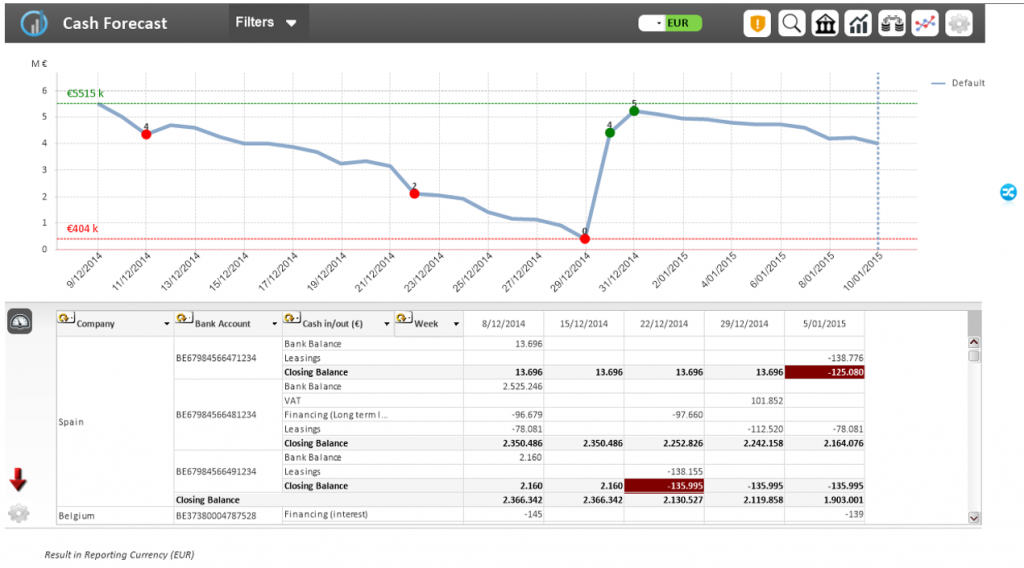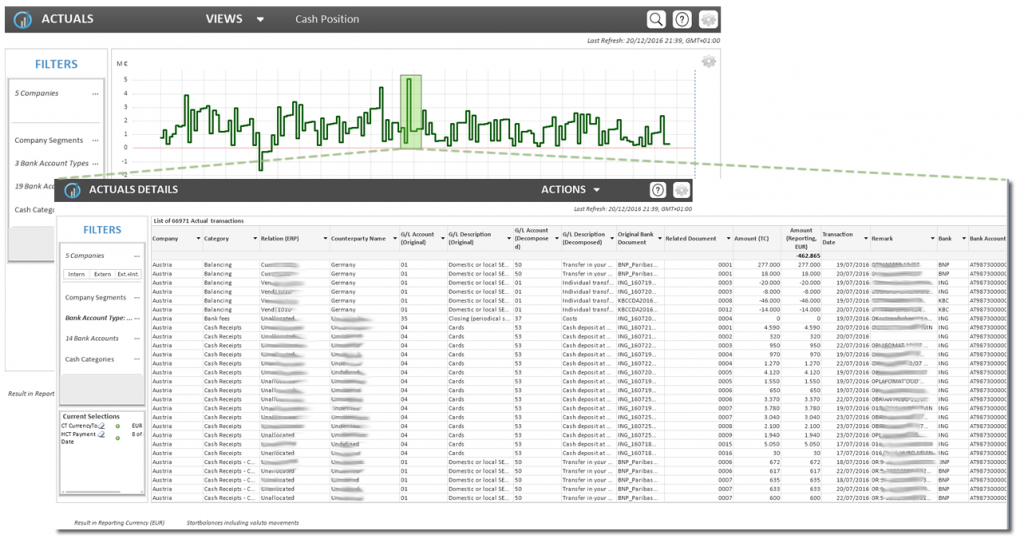The size and shape of your treasury team
| 09-11-2017 | Pieter de Kiewit |
 Last week I received a call from one of my clients. Over the last years, I found several members for their team. Given the transition they are in, they were looking for benchmark information to shape their treasury team and make it future proof. This has kept me thinking and I started gathering information in order to give a proper answer. As to be expected, there is no standard template resulting in an easy answer. Even for more evolved job types like sales or accounting this is a hard question, corporate treasury is too young and small for sound statistics.
Last week I received a call from one of my clients. Over the last years, I found several members for their team. Given the transition they are in, they were looking for benchmark information to shape their treasury team and make it future proof. This has kept me thinking and I started gathering information in order to give a proper answer. As to be expected, there is no standard template resulting in an easy answer. Even for more evolved job types like sales or accounting this is a hard question, corporate treasury is too young and small for sound statistics.
To make my analysis workable, I decided to measure the size of the team in a straightforward headcount. When talking about shape, I would like to work with the main functional areas: cash management, risk management, corporate finance and support. Of course this is an oversimplification. I think the following variables are the most relevant.
To start with the obvious: size matters. Size in revenue, number of employees, number of countries active in, number of currencies used, number of payments are all related to size of the treasury team. Not 100%. Senior management requesting detailed and up-to-date information requires a bigger team. We see this especially with organizations in turbulent situations, internally or in dynamic markets. Treasury teams that recently started, do not yet have a focus on efficiency and tend to be bigger. The willingness to invest in modern IT solutions on one hand creates a bigger team: key users and treasury IT managers, on the other hand it replaces staff doing manual work. Finally improving aspects like segregation of duties and back-up typically create a bigger team.
Moving forward to the shape of the treasury team or perhaps the size of the various functional areas, I observe that the industry and company status have their impact. Typically, companies with a dynamic balance sheet, due to distress or growth (autonomous or take overs) need a bigger corporate finance function. A longer balance sheet in a capital intense industry requires a bigger team. In this area I also see an increase in project and customer finance teams contributing in the structuring of business deals.
Companies with diverse and dynamic payment flows need bigger cash management teams. Especially corporates with an ambition towards strong centralization require extra central staff. They need stronger software support, communicate a lot with subsidiaries and have to understand the business. If achieved, central cash management can be managed by few.
I observe a decrease of number of staff working in FX and interest risk management. Corporates are more risk averse, markets are transparent and ICT enables STP processes. In parallel other types of risk increase the workload: counter party, commodities, insurance, etcetera. Big data and business modeling is having its impact.
This blog does not have the ambition to be comprehensive, the above could be more thorough. Furthermore I could elaborate on aspects like control, IT and especially back office and settlements. Should they even be in your treasury team? I think the topic deserves further attention and could be researched by more than one graduate student.
What are your thoughts? What obvious aspect should be included? I look forward to your reactions,
Pieter de Kiewit

Pieter de Kiewit
Owner Treasurer Search


 The treasury community knows us from ‘fresh’ content on a daily basis. A growing number of treasury professionals, our experts, send in articles and blogs and it is our goal to present interesting content that matters to our readers.
The treasury community knows us from ‘fresh’ content on a daily basis. A growing number of treasury professionals, our experts, send in articles and blogs and it is our goal to present interesting content that matters to our readers. Annette Gillhart – Community Manager treasuryXL
Annette Gillhart – Community Manager treasuryXL In July 2017 our expert Pieter de Kiewit wrote an interesting article about the minor treasury managment of
In July 2017 our expert Pieter de Kiewit wrote an interesting article about the minor treasury managment of 

 While the role of the treasurer is changing, it becomes increasingly challenging to maintain the current workflows and simultaneously take on new demanding tasks. One of these often manual and time-consuming tasks is risk management. As seen in, among others, this year’s Global Treasury Benchmark Survey of PwC, the registration and management of financial instruments stands among the top 3 challenges on the agenda of the surveyed treasurers. In this article, we take a more in-depth look at possible optimizations in some key treasury workflows.
While the role of the treasurer is changing, it becomes increasingly challenging to maintain the current workflows and simultaneously take on new demanding tasks. One of these often manual and time-consuming tasks is risk management. As seen in, among others, this year’s Global Treasury Benchmark Survey of PwC, the registration and management of financial instruments stands among the top 3 challenges on the agenda of the surveyed treasurers. In this article, we take a more in-depth look at possible optimizations in some key treasury workflows.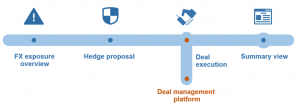

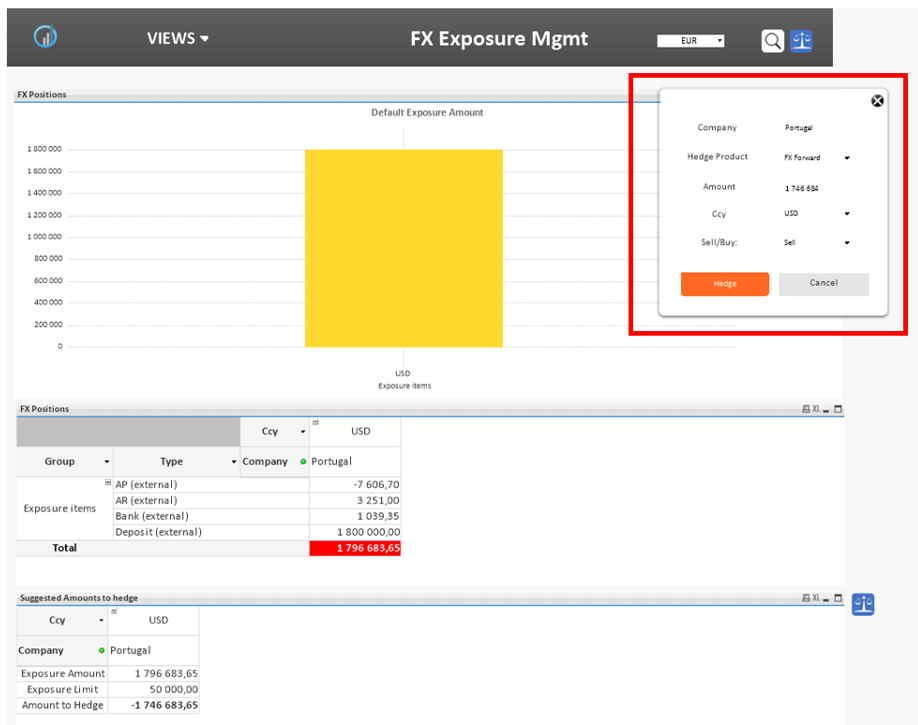
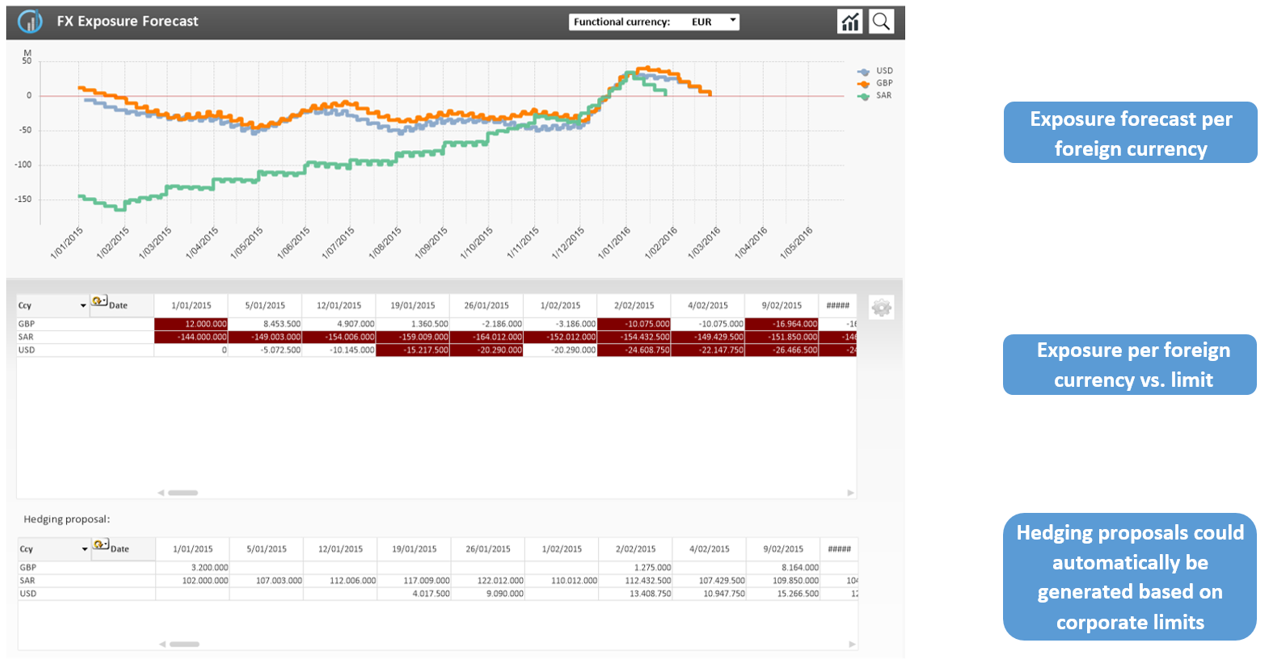 FX Exposure Management – Future positions & exposures
FX Exposure Management – Future positions & exposures
